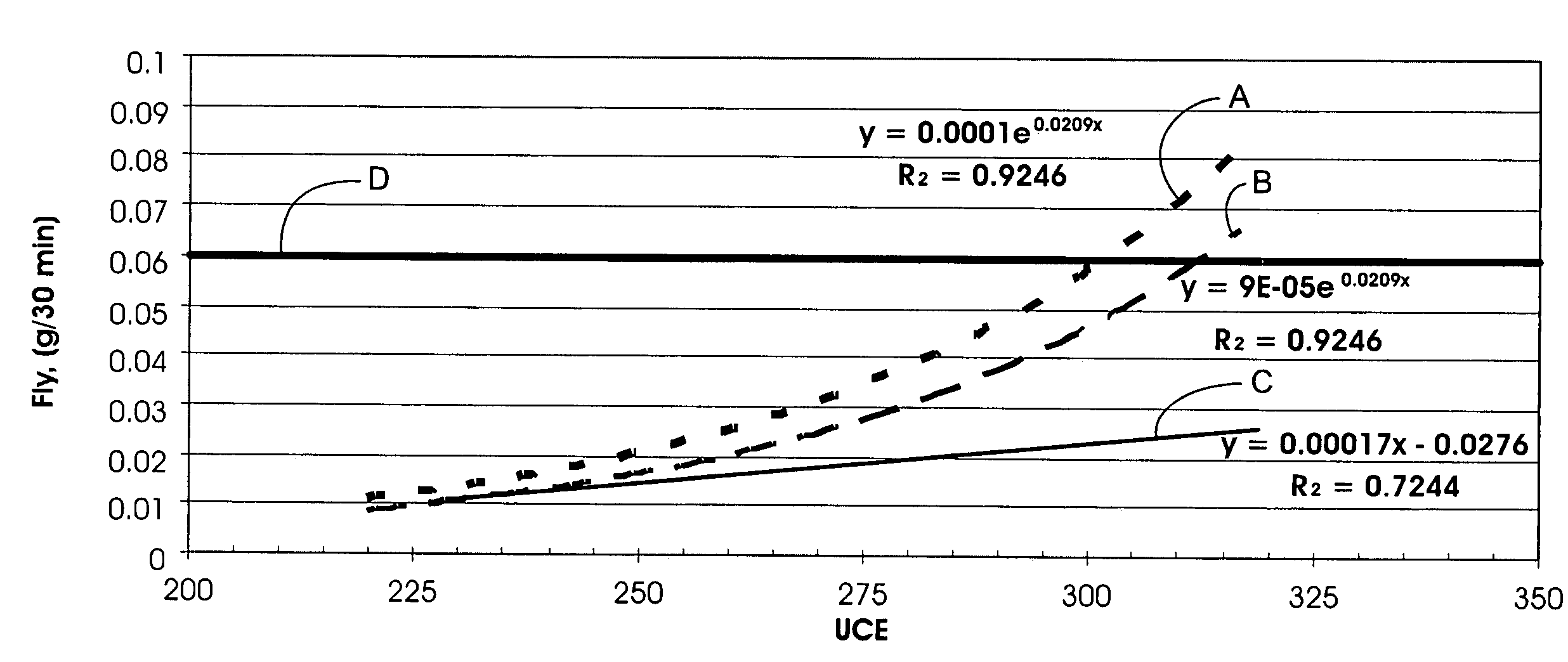Cellulose acetate tow and method of making same
a technology of cellulose acetate and tow, which is applied in the field of cellulose acetate tow and a method of making the same, can solve the problems of inability to find products, inconvenient tow, and inability to clear products, and achieve the effect of increasing the crimp level and increasing the fly (fluff) of the tow
- Summary
- Abstract
- Description
- Claims
- Application Information
AI Technical Summary
Benefits of technology
Problems solved by technology
Method used
Image
Examples
Embodiment Construction
[0023]In general, cigarette tow is made by spinning a dope into a plurality of filaments, taking up the filaments, lubricating the filaments, forming a tow by bundling a plurality of the filaments, crimping the tow, drying the crimped tow, and baling the dried crimped tow. In the present invention, each of these steps is conventional unless discussed below.
[0024]A dope is a solution of the polymer and solvent. The preferred polymer is cellulose acetate and the preferred solvent is acetone. Cellulose acetate suitable for use as cigarette filter material typically has a degree of substitution of less than 3.0, preferably in the range of 2.2 to 2.8, and most preferably in the range of 2.4 to 2.6.
[0025]The filaments typically range from 1 to 10 denier per filament (dpf). The filaments may have any cross-sectional shape, including, but not limited to, circular, crenulated, Y, X, and dogbone. The tow ranges from 10,000 to 100,000 total denier. The tow has a width (lateral edge to lateral ...
PUM
| Property | Measurement | Unit |
|---|---|---|
| pressure | aaaaa | aaaaa |
| width | aaaaa | aaaaa |
| groove depth | aaaaa | aaaaa |
Abstract
Description
Claims
Application Information
 Login to View More
Login to View More - R&D
- Intellectual Property
- Life Sciences
- Materials
- Tech Scout
- Unparalleled Data Quality
- Higher Quality Content
- 60% Fewer Hallucinations
Browse by: Latest US Patents, China's latest patents, Technical Efficacy Thesaurus, Application Domain, Technology Topic, Popular Technical Reports.
© 2025 PatSnap. All rights reserved.Legal|Privacy policy|Modern Slavery Act Transparency Statement|Sitemap|About US| Contact US: help@patsnap.com



